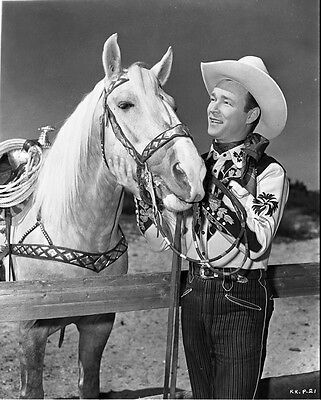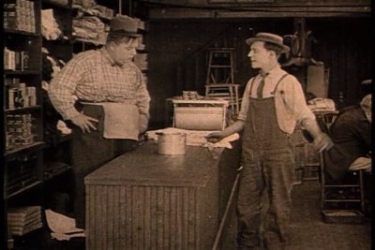Louis Wolheim: The Ugliest Character Actor in Hollywood History
In one of her earliest short stories - The Man Who Came Home - Edna Ferber described a character named Birdie as having “. . . a face that looked like a huge mistake.” She could easily have been referring to actor the great Louis Wolheim, who was, hands down, the ugliest character actor in Hollywood history. Universally respected as an actor’s actor, and widely known as an erudite “doll of a man” Wolheim was invariably cast as a brute because of his “huge mistake of a face.” Born into an Orthodox family in Russia in 1880, Wolheim, arrived in New York in 1888 with his parents Elias & Lena Wolheim, where they would eventually be blessed with nine more children.
A brilliant student who spoke fluent French, German, Spanish and Yiddish (his mother- tongue), Louis enrolled at the City College of New York; after 2 years, he transferred to Cornell University, where he earned a degree in engineering – and played varsity football. That’s how he originally injured his nose. However, according to a contemporary issue of Photoplay magazine, Louis had his nose restored to its original glory surgically, and celebrated the occasion with a party at an Ithaca bar. After a bit of drinking, he and one of his guests got into a fight, during which he broke his nose a second time. (Wolheim told the fan magazine that he won the fight.)
Following graduation, Wolheim remained in Ithaca where he became a highly popular and successful math tutor. One of his pupils was future movie star Alolphe Menjou, who later described Wolheim as having “a mind like a calculating machine and a face that looked as though it had been run over by a truck." (Ironically, it was the handsome, debonair Menjou who, in 1931, replaced Wolheim in his starring role in the original version of “The Front Page,” when Wolheim unexpectedly died.) Wolheim spent a couple of years in Mexcio working as a mining engineer and then returned to Ithaca, where he sold cigars at a local hotel. One day in mid-1914, Wolheim was spotted by actor Lionel Barrymore, who was in town shooting a two-reel picture for D.W. Griffith’s Biograph Studio. (n.b.: in 1914, Barrymore starred or appeared in 14 silent films). Barrymore, according to the legend, advised Louis that “with that face, you could make a fortune in the theater.” Shortly thereafter, Wolheim began his acting career, first as an uncredited extra in dozens of shorts and serials.
With the help of Lionel and his younger brother John, Wolheim eventually transferred his face and untrained theatrical talent on the stage, where from 1919 to 1925, he appeared in 10 Broadway plays. Keeping a finger in film, he also landed a reasonably meaty role in John’s 1922 film Sherlock Holmes, costarring Roland Young, William Powell, Hedda Hopper and, as Professor Moriarty, Gustav von Seyffertitz. (A trivial note: Von Seyffertitz, who by the outbreak of WWI was already a star of note in Hollywood, took the advice of his producer, Jesse Lasky, who thought it wise to change his name to something far, far less Teutonic. In 1915 and beyond, Americans were anti everything “Hunnish.” Thus, “sauerkraut” became “liberty cabbage,” the teaching of German in public school legally banned, and Gustav von Seyffertitz was renamed “C. Butler Clonblough.” He wouldn’t go back to using his birth name until 1919.)
Shortly after completing his brief role in Sherlock Holmes, Wolheim met playwright Eugene O'Neill by chance at a Barrymore thrown party to celebrate the opening of The Claw which starred Lionel and opened in October 1921. (The Claw was written by the French playwright Henri Bernstein, and was translated into English by none other than Louis Wolheim). O’Neil was immediately taken with Wolheim, and cast him as the lead in his newest play, an expressionist one act, eight scene piece called The Hairy Ape. The play, which confused most theatre-goers, was most notable for the newcomer playing the lead role of “Yank,” a barrel-chested trouble-maker who works on board a trans-Atlantic ship. It had a successful run on Broadway in 1921-1922; O’Neil and Wolheim would would remain lifelong friends. Wolheim, with his “face that was a mistake” soon became familiar to Broadway audiences; in 1925, he costarred as Captain Flagg to William Boyd’s Sgt. Quirt in the fabulously successful What Price Glory? From there, it was a quick leap to Hollywood where the roles were bigger, the work quite steady and the paychecks far larger.
In 1927, Wolheim costarred in Two Arabian Knights, alongside his What Price Glory? costar William Boyd (the future “Hopalong Cassidy), and Mary Astor. The film, which won the first - and only - Academy Award for “Best Direction of a Comedy Picture” (Lewis Milestone, nee Lev Milstein) was produced by the then 22-year old Howard Hughes. (Trivia Break: Two Arabian Knights is the only film in Academy history to win a Best Director Prize [it wasn’t yet called an “Oscar”] without being nominated in any other category. Milestone would go on to win a second best director’s awards [1930’s All Quiet on the Western Front] - costarring Louis Wolheim - and be nominated for a third - 1931’s The Front Page - which, as mentioned above, originally starred Wolheim who, following his unexpected death, was replaced by his old Cornell student, Alophe Menjou.)
From 1914-1931, Louis Wolheim appeared played in 49 silent and 8 talking motion pictures. Throughout his relatively short career, he made films for everyone from Wharton, Rolfe Photoplays to Biograph, Goldwyn, RKO, D.W. Griffith Productions and Universal. Wolheim’s best-known, most beloved performance was that of the German sergeant Kaczkinsky (Kat) in Universal’s all-time great anti-war film “All Quiet on the Western Front,” in which he costarred with the then 22-year old Lew Ayres. The film had a lasting effect on both Ayres and Wolheim: it turned the young Ayres into a lifelong pacifist, which all but ruined his career when he declared himself a conscientious objector in WWII - theatres refused to screen his films. For Wolheim, it put a dramatic bee in his bonnet. Seeking to expand his cinematic range by improving his looks, he began making arrangements for having his nose fixed by a prominent Beverly Hills plastic surgeon. However, his studio at the time, United Artists, went to court for a restraining order to stop him.
Typecast throughout his career as a gangster, bully or prisoner, off-screen Wolheim was known for his modesty and for always being ready to help friends in need. After his death, Photoplay Editor James R. Quirk wrote, “His hard-boiled face was a mask; he was a child who never quite knew what it was all about. I think he felt he would live to help a great world-change for the better. He had a passion to make the world better. He believed no one should get more from life than than he gave to it.”
Louis Wolheim died from stomach cancer on February 18, 1931, just six weeks shy of his 51st birthday. He is buried in the Hollywood Forever Cemetery in Hollywood, right next to the unmarked grave of Frank Zappa.
Copyright©2019 Kurt F. Stone








































